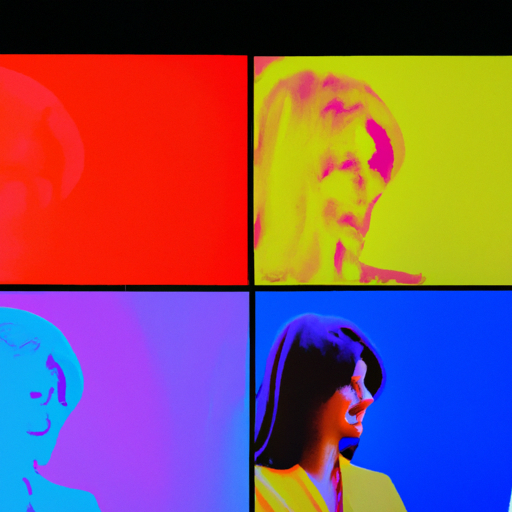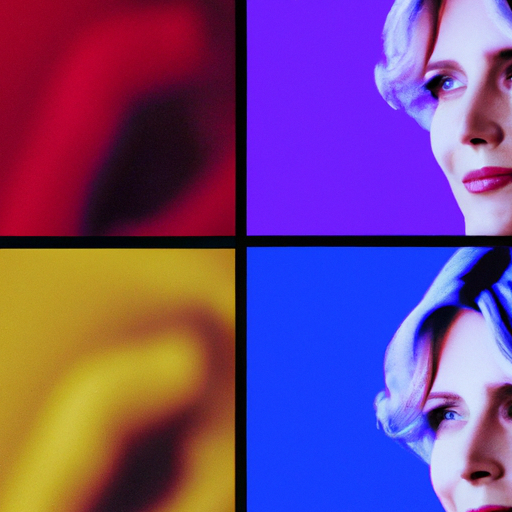
-
Table of Contents
The Power of Color Psychology in Graphic Design

Color is a powerful tool that can evoke emotions, convey messages, and influence behavior. In the world of graphic design, understanding the principles of color psychology is essential for creating impactful and effective designs. By strategically selecting and combining colors, designers can create visually appealing and emotionally engaging experiences for their audience. In this article, we will explore the fascinating world of color psychology and its application in graphic design.
Understanding Color Psychology
Color psychology is the study of how colors affect human behavior and emotions. Different colors have the ability to evoke specific feelings and associations, making them a valuable tool in design. By understanding the psychological effects of colors, designers can create designs that resonate with their target audience and effectively communicate their intended message.
Here are some common associations and emotions associated with different colors:
- Red: Red is often associated with passion, energy, and excitement. It can grab attention and create a sense of urgency. It is commonly used to convey a sense of importance or to stimulate appetite, making it a popular choice for food-related designs.
- Blue: Blue is often associated with calmness, trust, and reliability. It is commonly used by brands that want to convey a sense of professionalism and dependability. Lighter shades of blue can create a sense of tranquility, while darker shades can evoke a sense of authority.
- Yellow: Yellow is often associated with happiness, optimism, and creativity. It can grab attention and create a sense of warmth. It is commonly used to convey a positive and energetic vibe, making it a popular choice for designs related to children or leisure activities.
- Green: Green is often associated with nature, growth, and harmony. It can create a sense of balance and relaxation. It is commonly used in designs related to health, sustainability, and the environment.
- Purple: Purple is often associated with luxury, creativity, and spirituality. It can create a sense of elegance and sophistication. It is commonly used in designs related to beauty, art, and high-end products.
- Orange: Orange is often associated with enthusiasm, warmth, and excitement. It can grab attention and create a sense of energy. It is commonly used in designs related to entertainment, sports, and youth-oriented products.
The Role of Color in Branding
Color plays a crucial role in branding as it helps create a visual identity and evoke specific emotions and associations with a brand. Consistency in color usage across different touchpoints helps establish brand recognition and build a strong brand image.
Let’s take a look at some famous brands and the colors they use:
- McDonald’s: The fast-food giant uses red and yellow in its logo and overall branding. Red stimulates appetite and creates a sense of urgency, while yellow evokes happiness and optimism. These colors are strategically chosen to create a vibrant and energetic brand image.
- Facebook: Facebook’s logo is predominantly blue. Blue conveys trust, reliability, and a sense of professionalism, which aligns with Facebook’s goal of connecting people and building a trustworthy platform.
- Nike: Nike’s iconic swoosh logo is black, while their brand color is predominantly black and white. Black represents power, elegance, and sophistication, while white represents simplicity and purity. These colors reflect Nike’s brand values of empowerment and performance.
- Starbucks: Starbucks uses a combination of green and white in its logo and branding. Green represents nature, growth, and harmony, which aligns with Starbucks’ commitment to sustainability and ethical sourcing.
These examples demonstrate how color choices can help reinforce a brand’s message and create a strong visual identity.
Color Combinations and Contrast
While individual colors have their own psychological effects, the way colors are combined and contrasted can also greatly impact the overall design. Designers need to consider color harmony, contrast, and balance to create visually appealing compositions.
Here are some popular color combinations:
- Complementary Colors: Complementary colors are opposite each other on the color wheel, such as red and green or blue and orange. These combinations create a high level of contrast and can be used to create visually striking designs.
- Analogous Colors: Analogous colors are adjacent to each other on the color wheel, such as blue, green, and yellow. These combinations create a sense of harmony and can be used to create designs with a calming or cohesive feel.
- Monochromatic Colors: Monochromatic colors are different shades and tints of the same color. This creates a sense of unity and can be used to create designs with a minimalist and sophisticated look.
- Triadic Colors: Triadic colors are evenly spaced around the color wheel, such as red, yellow, and blue. These combinations create a sense of balance and can be used to create vibrant and dynamic designs.
By understanding color combinations and contrast, designers can create visually appealing designs that capture attention and effectively communicate the intended message.
Case Studies: The Impact of Color in Design
Several case studies have demonstrated the power of color in design and its impact on user behavior and perception. Let’s explore a few examples:
Call-to-Action Buttons
A study conducted by HubSpot found that changing the color of a call-to-action button on a landing page can significantly impact conversion rates. They tested different button colors and found that a red button outperformed other colors, resulting in a 21% higher conversion rate. This highlights the importance of color in guiding user behavior and influencing actions.
Logo Redesigns
Logo redesigns can have a profound impact on brand perception and recognition. When Instagram changed its logo from a retro camera to a colorful gradient, it received mixed reactions from users. However, the new logo helped position Instagram as a modern and vibrant platform, attracting a younger audience and increasing user engagement.
Conclusion
Color psychology plays a crucial role in graphic design, allowing designers to create visually appealing and emotionally engaging experiences. By understanding the psychological effects of colors, designers can strategically select and combine colors to evoke specific emotions and associations. Color choices can also help establish a strong brand identity and influence user behavior. By considering color combinations, contrast, and balance, designers can create visually striking designs that effectively communicate their intended message. The power of color psychology in graphic design cannot be underestimated, and designers who harness this power can create designs that leave a lasting impact on their audience.
